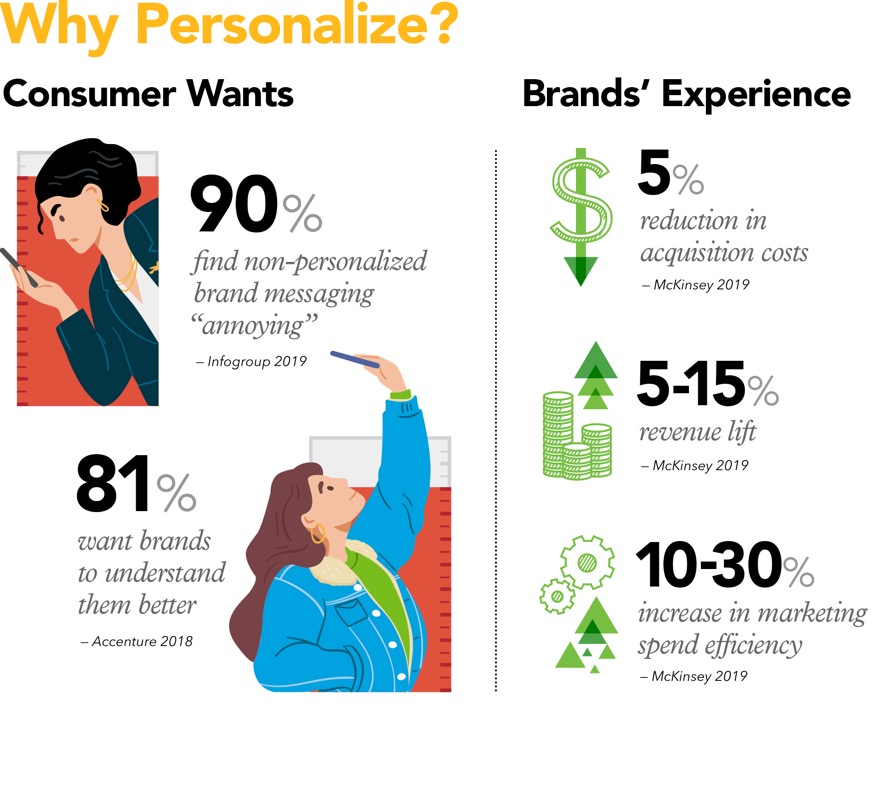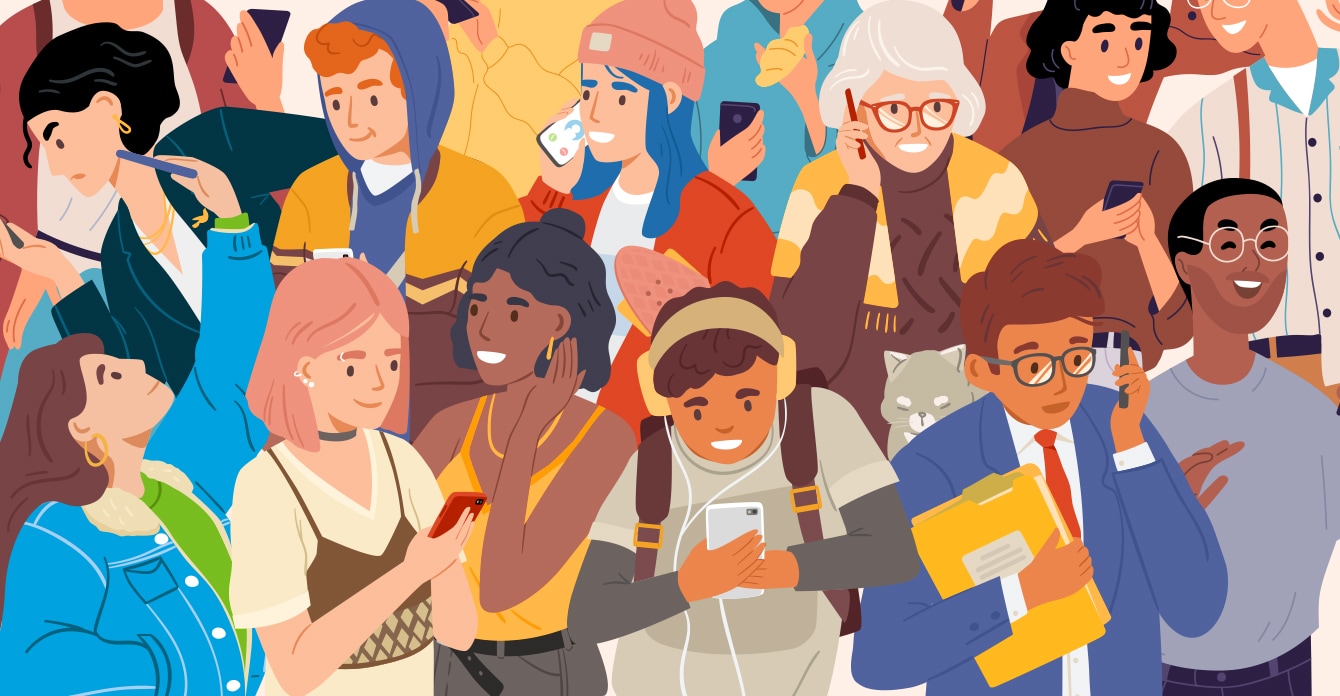The importance and impact of marketing personalization is more relevant than ever in the post-COVID environment, where brands must rely on forging smart and meaningful virtual connections with their constituents to stand out, foster loyal relationships and drive conversions.
Even pre-COVID-19 studies show how important personalization is to marketing relevance and results.

Five behavioral science principles explain how personalization works to help marketers strengthen response in both B2B and B2C segments. By applying these principles, you can design an environment that drives people to adopt desired behaviors, especially in digital environments.
- Remove friction to find the path of least resistance.
By amplifying benefits and minimizing interference along all points of the user journey, personalization helps marketers “grease” their audience to perform a desired behavior. Think about how Spotify uses its recommendation engine to select the best next song to keep listeners tuned in all day; how Amazon increased their check out efficiency so customers can simply click “buy now”; or how Uber makes finding and paying for a cab turnkey—all through personalization. - Chunk information to maximize working memory.
The average brain holds between five and nine chunks of information at one time. Think about the way that people remember 10-digit phone numbers: They break them into chunks of three or four numbers to optimize their memory. When you think about online content, scrolling website banners are likely to overload working memory and work against communication of any key message. Similarly, long scrolling blocks of text aren’t good for working memory—short copy blocks are; clicking through to a new web page “resets” working memory so people are ready to engage with new content and remember more. - Maximize cognitive fluency.
If information is easy to understand, then people gravitate toward it and believe it to be true—the simpler the communication and presentation, the greater the adoption. Too much information to process—aka cognitive load—causes your audience to take a much more critical look, operate under stress and slow down rather than perform your desired behavior. Consider the impact of words, messages and even design elements and how they simplify (or complicate) your communication. - Leverage narrative bias.
As humans, we’ve evolved to remember and relate to stories. Think about the story behind your brand and what it says about it. Make it highly relatable to your audience’s everyday life so they grasp the concept and how your solution benefits them in a way that is relevant and meaningful to them. Weave the brand’s narrative into your audience’s journey in a personal way. - Create the “cocktail party” or “like-me” effect.
When you hear your name said across the room at a cocktail party, you gravitate toward it like a magnet, disengaging in your current conversation to engage in the one that might be about you. Companies that welcome you to their home page by acknowledging you by name understand the power of the “cocktail party” effect.
The “like-me” effect plays a role here, as well. It puts the brain at ease and signals that your brand poses no threat to security. One company actually matched their call center staff with prospects who shared the same name or geographic location to create an immediate like-me effect, paving the way for common ground and discussion that disarmed prospects and “greased” the friction.
The bottom line: Personalization works by minimizing the perceived risk in a decision while nudging people strategically toward it. It reduces information overload, relates the brand narrative to the user’s journey and creates a sense of security to take direction. It forges deeper bonds and greater trust between brands and their audiences. And it reduces acquisition costs and increases the efficiency of your marketing spend.
Want to learn more about how to personalize your marketing messages? Contact us to find out how we can help you increase the ROI on your marketing investment through personalization.











